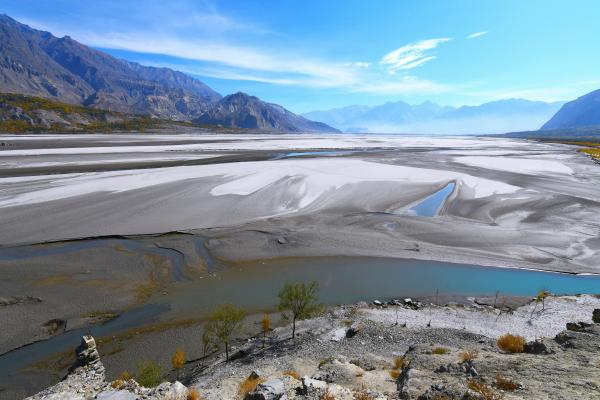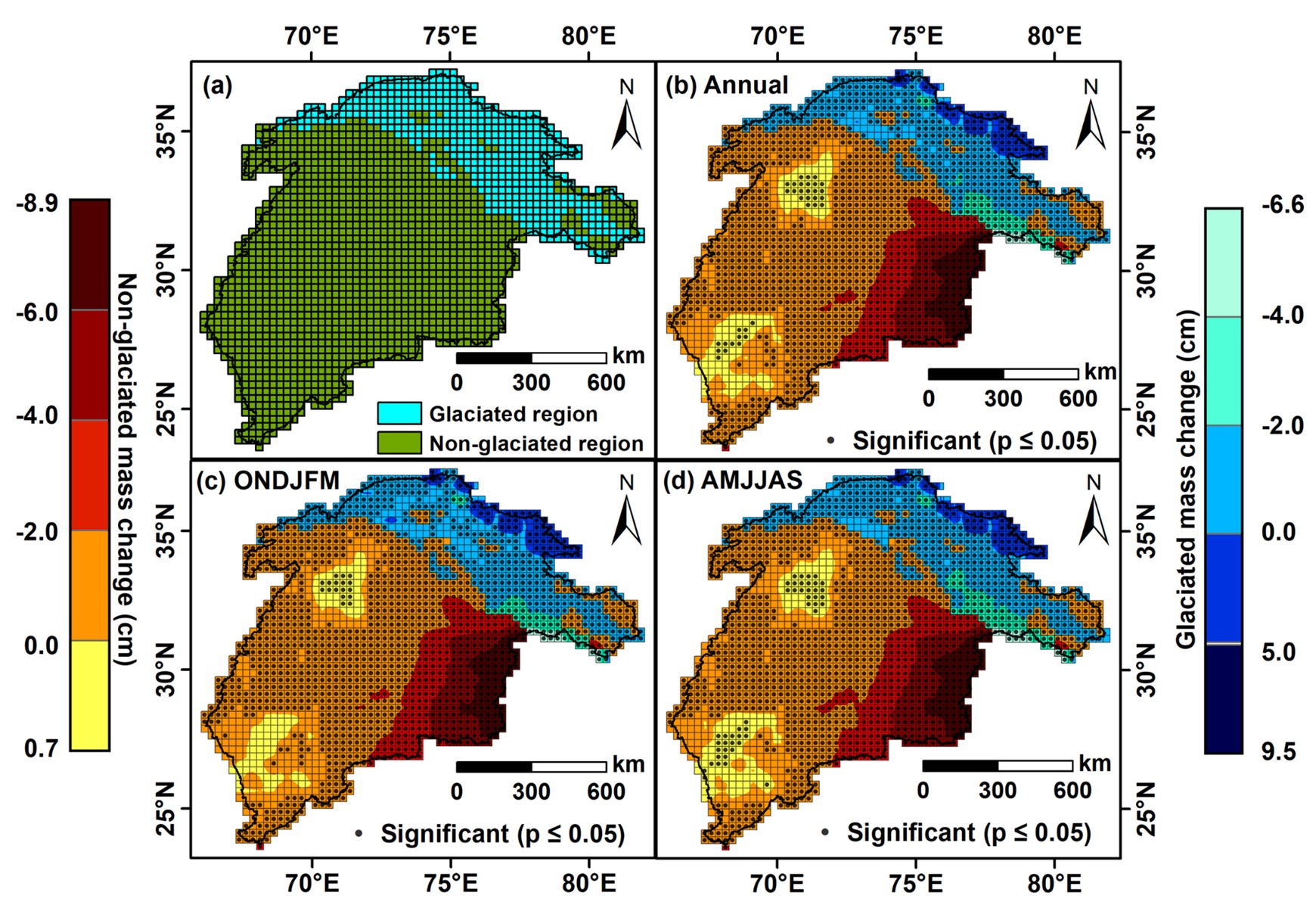Study Highlights Decline in Water Storage in the Indus Basin

A new study published in AGU's Water Resources Research warns of a drastic decline in groundwater storage in the Indus Basin, threatening water security for millions in South Asia. The research was led by former Ohio State University Byrd Center postdoctoral scholar Jaydeo Dharpure, now at Texas A&M AgriLife, Temple, Texas, along with Earth Sciences Professor Ian Howat from the Glacier Dynamics Research Group and former Byrd Center postdoctoral scholar Saurabh Kaushik, at the School of Geography, Development and Environment, University of Arizona, Tucson, AZ.
The researchers analyzed over two decades of terrestrial water storage anomaly (TWSA) data from April 2002 to May 2023 using GRACE and GRACE-FO satellite data. They found that groundwater depletion has accelerated sharply, with annual water loss rates increasing from -0.65 cm per year before 2015 to -2.16 cm per year after 2015.
The study shows that non-glaciated regions are suffering nearly twice the groundwater loss of glaciated areas (-1.44 cm/yr vs. -0.78 cm/yr). Among sub-basins, the Panjnad sub-basin experiences the highest groundwater depletion (-1.70 cm/yr), while the Upper Indus sees the lowest (-0.42 cm/yr).

Declining precipitation, surface runoff, and increasing evapotranspiration (ET) and vegetation growth are major contributors to groundwater loss. The study found that vegetation cover has increased by 0.23% annually, suggesting rising agricultural water demand.
The research highlights the role of climate change and human activity in worsening water scarcity. Over-extraction for irrigation and urban use is depleting reserves at an unsustainable rate, particularly in Pakistan and northwestern India.
With the Indus Basin supporting nearly 300 million people, this accelerating depletion poses serious risks to food security, agriculture, and long-term water availability. The researchers emphasize the urgent need for sustainable water management policies, including more efficient irrigation, alternative water sources, and stricter groundwater regulations.
Learn more about the study by visiting "Declining Groundwater Storage in the Indus Basin Revealed Using GRACE and GRACE-FO Data."
